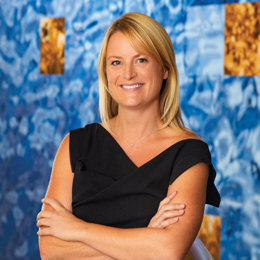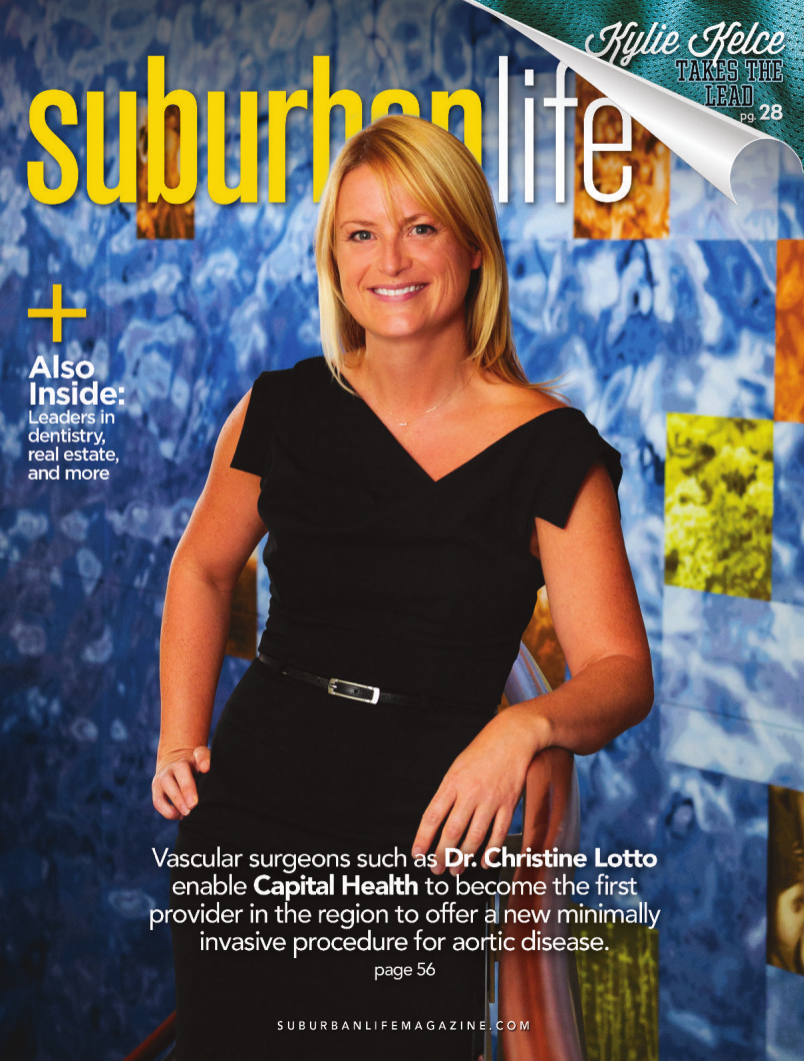
Christine Lotto, M.D., refers to aortic disease as a “silent killer,” due to the fact that people suffering from it often don’t even know they have it, and only find out from medical imaging for an unrelated issue. For that reason, she encourages anyone with a family history of aneurysmal or connective tissue disorders, particularly men with a history of smoking, to be aware of their susceptibility to aortic disease and to stay up to date on regular checkups.
Whether it is caught fortuitously, through a screening, or diagnosed after the onset of symptoms, the good news is that there is a new minimally invasive procedure available to restore function to damaged aortas with a faster recovery time, less pain, and fewer complications than the surgeries commonly used in the past. It’s no surprise that Capital Health – a health network with a reputation for continually raising the bar – recently performed the first branched thoracic endovascular aortic repair, or branched TEVAR, in the region.
“Vascular surgery in any capacity can be dangerous, especially surgery on the aorta,” says Dr. Lotto, a board-certified general and vascular surgeon with Capital Health. “Advances in these types of surgery and technology are so important to help keep patients as safe as possible. Having the support of the institution to provide the most state-of-the-art care is invaluable to our patient population.”
In the past, Dr. Lotto explains, all aortic disease was treated with open surgery, meaning large incisions and complete replacement of the affected portion of the aorta. In the aortic arch – the area in the aorta treated by this new stent – patients even needed to undergo cardiac bypass as part of the surgery.
TEVAR stents were first approved in 2005, but these did not allow for blood for flow to the large blood vessels supplying the head, neck, and arms, so open surgery was still needed. The branched TEVAR device, the first of its kind approved by the U.S. Food and Drug Administration, allows for aortic disease to be treated without large incisions in some cases, while permitting blood to flow normally to all important vessels.
Leading the region’s first branched TEVAR was a proud moment for Dr. Lotto, who was fellowship-trained at Harvard and at a renowned hospital in Paris.
“I have been preparing to use branched aortic devices since my fellowship, where Dr. Walsh (her vascular surgery partner) and I were both afforded the opportunity to train in Sweden and France learning the intricacies and subtleties of these operations,” she says. “As the European Union regulatory bodies are not as stringent as the FDA, they have been using these devices for years, and being able to have that additional training and experience helped tremendously. One of my goals coming here was to help provide the best and most up-to-date vascular care that I could to this area, and this is a manifestation of that.”
Capital Health’s vascular surgery team also includes Joshua Eisenberg, M.D., Jillian Walsh, M.D., and Kogulan Nadesakumaran, M.D., who treat patients at an office in Hopewell Township, New Jersey. The practice offers the whole breadth of vascular surgery options in treating peripheral arterial disease (blockages in the blood vessels), aneurysms, vein issues, carotid disease, thoracic outlet syndrome, dialysis access, and more.
The collaborative spirit of the department was showcased during the initial branched TEVAR procedure, in which Dr. Lotto was joined by Drs. Walsh and Nadesakumaran.
“I definitely want to emphasize that the use and safe deployment of this graft requires that at least two vascular surgeons work together in unison,” Dr. Lotto says. “I think our group is particularly successful in these types of endeavors because of the vascular surgery team’s synergy during every step of the patient’s care: from the meticulous preoperative planning, to doing the operation itself, and taking care of the patient afterwards. All four of us participate in each patient’s care, and our ability to work together seamlessly is a significant driver of good outcomes.
“Vascular surgery is a team sport,” she continues. “Drs. Eisenberg, Walsh, and Nadesakumaran are the best partners and surgeons. Our support for each other and unified collaboration is what enables us to continue to pursue the best vascular care in the region.”
Although becoming a vascular surgeon – and even being involved in medicine at all – was not on Dr. Lotto’s radar from a young age, now she can’t imagine doing anything else. Finding a home at Capital Health has been rewarding for her and advantageous to patients on both sides of the Delaware River who receive compassionate and progressive care from the entire hospital.
“I am not someone who always knew I wanted to be a physician,” she says. “For me it was a slow realization, not an epiphany. Through experiences in college and in doing mission work abroad, I recognized that medicine is the perfect blend of my love of science with my love of taking care of people. In medical school I gravitated toward the intensity and fine skills required in surgery, and feel the most alive and in touch with humanity helping people in a tangible way.”
Capital Health Surgical Group – Vascular Surgery
Two Capital Way, Suite 456
Pennington, NJ 08534
CapitalHealth.org
Photo by Alison Dunlap
Published (and copyrighted) in Suburban Life magazine, September 2024.



